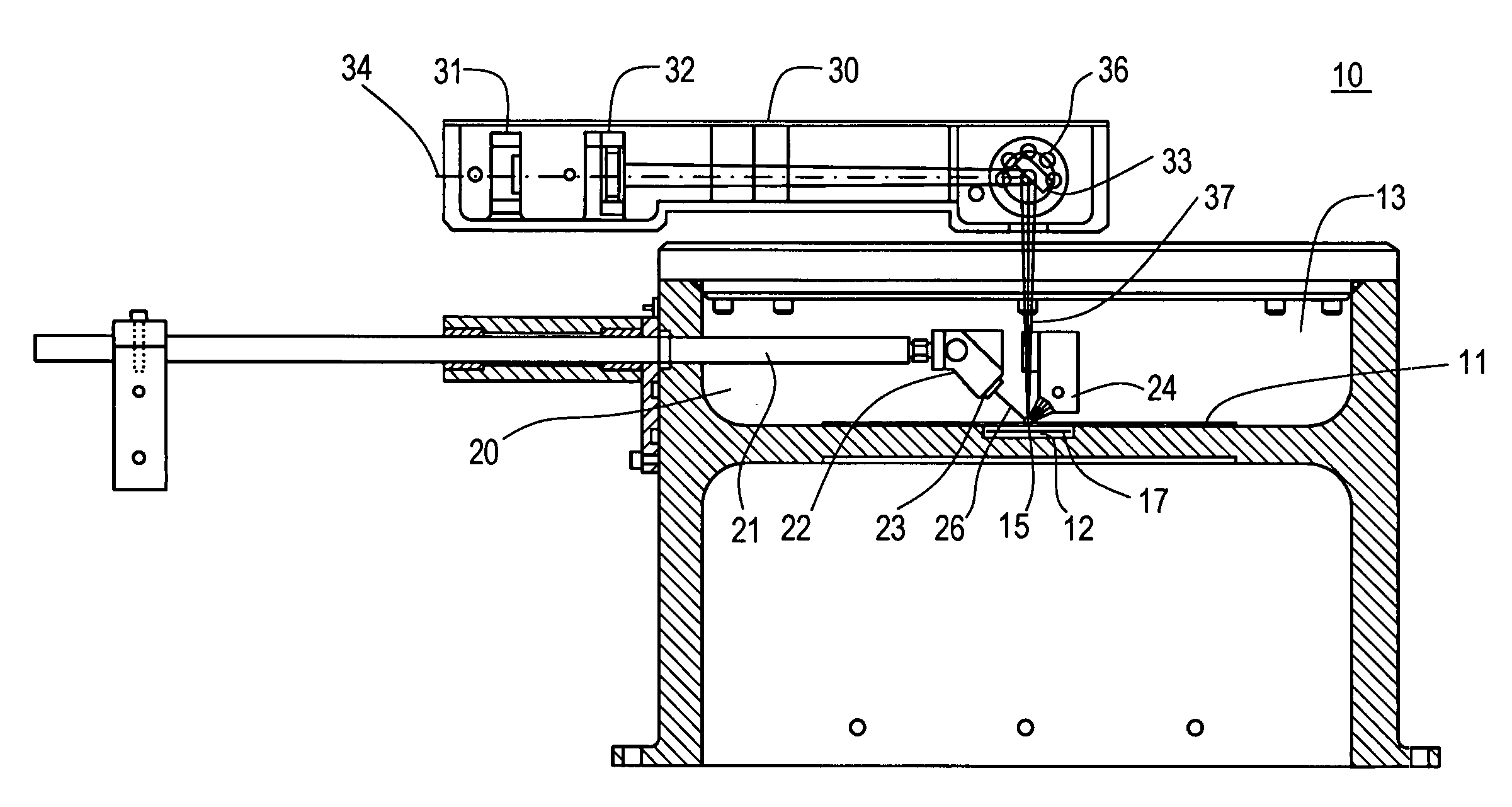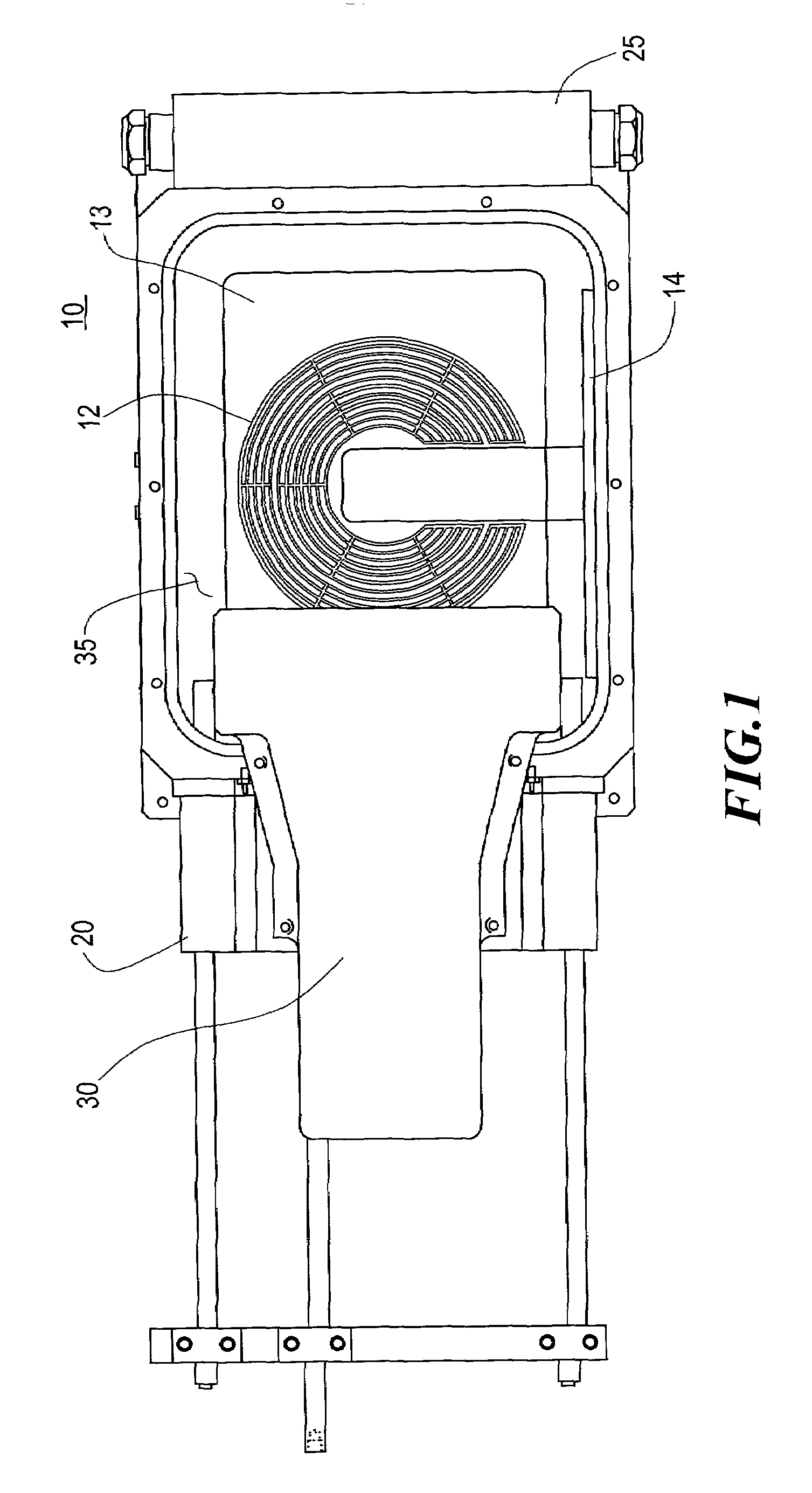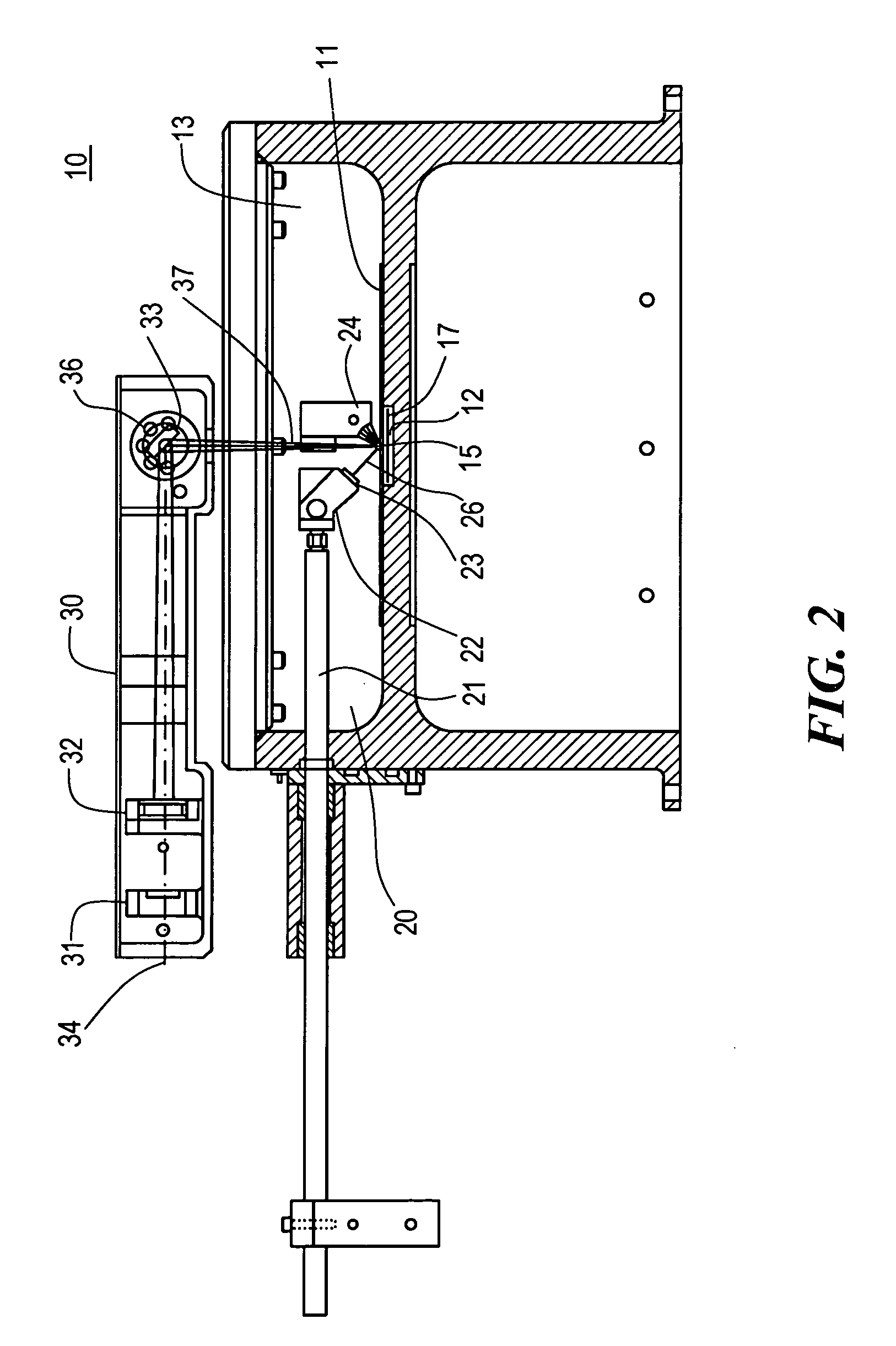Scanning plasma reactor
a plasma reactor and plasma technology, applied in vacuum evaporation coatings, chemical vapor deposition coatings, coatings, etc., can solve the problems of large volume of gas and waste of energy required to excite large volume of gas, unwanted reactions on many surfaces, and large volume of interior volume filled, so as to reduce cycle time and equipment cost, reduce by-product contamination in the chamber, and high degree of reaction uniformity and process efficiency
- Summary
- Abstract
- Description
- Claims
- Application Information
AI Technical Summary
Benefits of technology
Problems solved by technology
Method used
Image
Examples
example # 1
EXAMPLE #1
[0071]The UV irradiation of metallic copper will lead primarily to thermal heating for pulse durations on the nanosecond timescale, like those from an excimer laser. When copper films are placed over silicon dioxide, there is very poor thermal transfer to the silicon. This is partly because of the difference in atomic mass between copper and silicon and because there is effectively an interfacial layer at the junction of the two films. When thin copper films are therefore exposed with the scanning plasma reactor, about 68% of the UV radiation is retained within the copper layer, and the balance is reflected. Copper reflects ˜33% of 193 nm radiation; at 157 nm UV laser wavelengths, only 21% is reflected, e.g. more efficient heating. This would result in a temperature rise at the surface to 580° C., or sufficient heat to cause dramatic surface re-arrangement. This is useful in changing the grain structure of the metallic copper layer to enhance con...
example # 2
EXAMPLE #2
Growth of Shallow Junction Layers
[0082]The creation of a shallow but highly doped region of silicon is a common but critical step in the creation of modem IC chips. Control of the doping density and depth of the shallow junction is currently controlled by ion implantation followed by annealing for high quality circuits. The problem with ion implantation is that it generates significant and damaging heat to the bulk of the wafer, thereby requiring a separate annealing step to ‘anneal out’ the damage. It also converts photoresist layers which are typically present into disordered graphite, which can then only be removed by using a two step process: a microwave low temperature ashing to bum off the majority of the organic film, followed by a chemical step in a highly corrosive mixture of boiling sulfuric acid and hydrogen peroxide.
[0083]The scanning plasma reactor can be used to replace this process by simply depositing a thin layer of doped amorphous silicon on the surface o...
example # 3
EXAMPLE #3
Densification
[0088]Deposited thin layers may have microscopic voids that are undesirable and could detract from good performance. For example, the tungsten barrier layer that is used in copper-metalized IC chips needs to be free of cracks and voids. Rapid heating of this metal layer with a UV pulse could improve film quality and reduce defects by providing instantaneous heat and expansion at the film surface sufficient to close the microscopic voids, and thereby densify the layer.
PUM
| Property | Measurement | Unit |
|---|---|---|
| wavelength range | aaaaa | aaaaa |
| length | aaaaa | aaaaa |
| temperatures | aaaaa | aaaaa |
Abstract
Description
Claims
Application Information
 Login to View More
Login to View More - R&D
- Intellectual Property
- Life Sciences
- Materials
- Tech Scout
- Unparalleled Data Quality
- Higher Quality Content
- 60% Fewer Hallucinations
Browse by: Latest US Patents, China's latest patents, Technical Efficacy Thesaurus, Application Domain, Technology Topic, Popular Technical Reports.
© 2025 PatSnap. All rights reserved.Legal|Privacy policy|Modern Slavery Act Transparency Statement|Sitemap|About US| Contact US: help@patsnap.com



